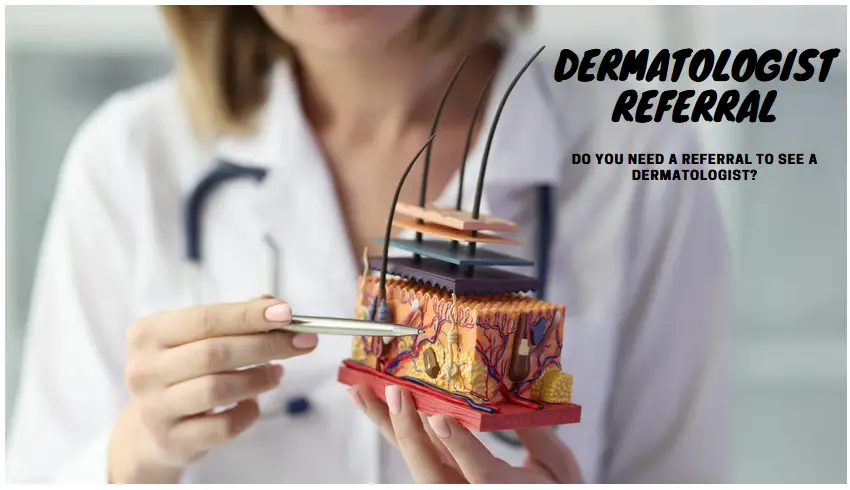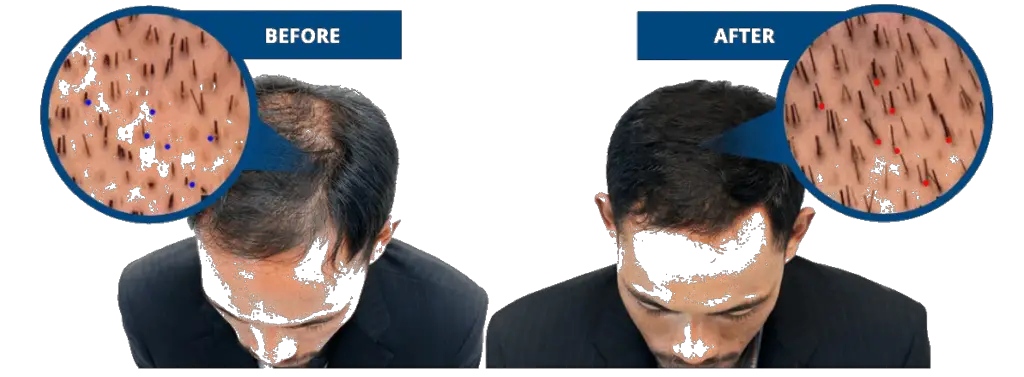Do I need a referral to see a dermatologist? Uncover the truth about whether you need a dermatologist referral and how to navigate the process with or without insurance.
Navigating the healthcare system can be a daunting task, especially when it comes to specialized care. One question that often arises is, do you need a referral to see a dermatologist? This article aims to provide a comprehensive guide to answer this question and more. From understanding the referral process to exploring the types of insurance plans that may affect your visit, this article leaves no stone unturned. It also delves into what to expect during a dermatologist appointment and how to find a dermatologist that accepts your insurance.
So, Do You Need a Referral to See a Dermatologist?
You don’t absolutely need a referral to see a dermatologist, but it largely depends on your health insurance plan. If your plan requires a referral and you visit a dermatologist without one, your insurance may not cover the cost, leaving you with the bill. Therefore, it’s crucial to consult your primary care physician or a walk-in clinic to get a referral, especially if you want your visit to be covered by insurance.
You will also like: Trichologist vs Dermatologist: Who to See for Hair Loss
Why Would You Need to See a Dermatologist?
Dermatologists are the go-to experts for a variety of skin, hair, and nail issues. Here are some common reasons why you might need to consult one:
Skin Conditions
From acne and eczema to more severe conditions like melanoma, dermatologists are skilled in diagnosing and treating a wide range of skin disorders. Early detection is crucial, especially for conditions that can be life-threatening if left untreated.
Hair Loss
Hair loss can be a distressing experience, affecting both men and women. Whether it’s male pattern baldness or female pattern baldness, a dermatologist can provide targeted treatments to help manage the condition. For more insights into female hair loss, explore our comprehensive guide on Female Pattern Baldness.
Cosmetic Procedures
Beyond medical treatments, dermatologists also offer cosmetic procedures like Botox, fillers, and laser hair removal. These treatments can enhance your appearance but require a skilled hand for safe and effective results.
If you’re dealing with persistent skin issues, unexplained hair loss, or considering a cosmetic procedure, a visit to a dermatologist can be a game-changer. Don’t let uncertainty hold you back. Learn how to navigate the referral process and insurance maze by diving into our detailed guide below. From understanding the role of your primary care provider to choosing between an HMO, PPO, or PFFS plan, we’ve got you covered.
Ready to take control of your skin and hair health? Discover how to get a dermatology referral and make the most of your appointment.
The Referral Process Explained
Navigating the healthcare system often feels like a maze, especially when specialized care is needed. One of the most common questions that arise is the importance of referrals when it comes to seeing a dermatologist. This section aims to demystify the referral process, explain the role of your primary care provider, and provide a step-by-step guide on how to get a dermatology referral.
Importance of Referrals
Referrals serve as a gateway to specialized healthcare services, including dermatology. They are often a prerequisite for insurance coverage, ensuring that the visit to the dermatologist is medically necessary. Without a referral, individuals may find themselves paying out-of-pocket or facing challenges in insurance claims.
Role of Primary Care Provider
Your primary care provider plays a pivotal role in the referral process. They are the first point of contact for any health concerns and are responsible for making a preliminary diagnosis. If the condition is beyond their expertise, a referral to a specialist like a dermatologist is issued. For those dealing with hair loss issues, a specialized procedure like a DHI Hair Transplant may be recommended.
How to Get a Referral
Getting a referral involves a series of steps that usually start with a visit to your primary care provider. Below is a table outlining these steps:
| Step | Action | Notes |
|---|---|---|
| 1 | Visit Primary Care Provider | Discuss symptoms and concerns |
| 2 | Preliminary Diagnosis | Provider decides if a referral is needed |
| 3 | Issuing the Referral | Provider sends referral to dermatologist |
| 4 | Insurance Approval | Confirm with insurance if pre-approval is needed |
| 5 | Schedule Appointment | Book your visit with the dermatologist |
If you’ve been struggling with skin or hair issues and are unsure about how to navigate the dermatology referral waiting time or the intricacies of your insurance company policies, this guide is your go-to resource. Don’t let the complexity of the healthcare system deter you from getting the care you need.
Ready to take the next step in your healthcare journey? Learn how to efficiently get a dermatology referral and what to expect during the process.
Types of Insurance Plans and Their Impact
When it comes to healthcare, not all insurance plans are created equal. The type of insurance you have can significantly impact your experience, especially when seeking specialized care like dermatology. This section will delve into the three main types of insurance plans: Health Maintenance Organization (HMO), Preferred Provider Organization (PPO), and Private Fee-for-Service (PFFS), and how they affect your ability to get a dermatology referral.
HMO (Health Maintenance Organization)
An HMO plan usually requires you to choose a primary care provider who will be your main point of contact for all healthcare services. Referrals are generally mandatory for seeing specialists, and you’ll need to stay within the network for coverage. Failure to do so could result in higher out-of-pocket costs.
PPO (Preferred Provider Organization)
With a PPO plan, you have more flexibility when it comes to choosing healthcare providers. Referrals are often not required, and you can see specialists without going through a primary care provider. However, staying within the network is still more cost-effective.
PFFS (Private Fee-for-Service)
A PFFS plan offers the most flexibility, but can be the most expensive option. You can see any healthcare provider that accepts the terms and conditions of the PFFS plan, and referrals are generally not required.
Key Differences:
-
- HMO: Requires referral, limited network, lower cost.
- PPO: No referral needed, broader network, moderate cost.
- PFFS: No referral needed, any provider, higher cost.
Understanding the nuances of your insurance plan can make a world of difference when seeking specialized care. Whether you’re dealing with skin conditions, contemplating cosmetic procedures, or exploring hair loss treatments, knowing your insurance plan’s stipulations can save you both time and money. Don’t let the fine print catch you off guard.
Ready to make an informed decision about your healthcare? Discover how different insurance plans impact your ability to see a dermatologist and how to choose the right one for you.
What to Expect During Your Dermatologist Appointment
Once you’ve navigated the referral process and understood your insurance plan’s implications, the next step is the actual visit to the dermatologist. This section aims to prepare you for what to expect during your dermatologist appointment, from the initial consultation to various tests and procedures you may undergo.
Consultation
The consultation is the first and most crucial part of your dermatologist appointment. Here, you’ll discuss your medical history, current symptoms, and any specific concerns you may have. The dermatologist will perform an initial examination and may ask questions to better understand your condition. It’s essential to be open and honest to receive the most accurate diagnosis and treatment plan.
Tests and Procedures
Depending on your condition, the dermatologist may recommend various tests and procedures. These could range from simple skin biopsies to more advanced treatments like laser hair removal or chemical peels. For those considering laser treatments for hairline issues, our in-depth guide on Hairline Laser provides valuable insights.
Navigating a dermatologist appointment can be overwhelming, especially if it’s your first time. Knowing what to expect during the consultation and the types of tests and procedures that may be recommended can help alleviate some of that stress. Whether you’re dealing with acne, eczema, or considering a cosmetic procedure, being well-prepared can make your visit more productive and less daunting. Don’t go into your appointment blind; arm yourself with knowledge.
Ready to make the most out of your dermatologist visit? Learn what to expect during your appointment and how to prepare for it.
Waiting Time and Immediate Alternatives
In the world of healthcare, time is often of the essence. However, the traditional waiting time to see a dermatologist can sometimes be a hurdle. This section will explore the typical waiting periods and offer immediate alternatives like telemedicine options for those who can’t afford to wait.
Traditional Waiting Time
The waiting time to see a dermatologist can vary significantly depending on several factors, including location, the severity of your condition, and the availability of specialists. In some cases, it could take weeks or even months to get an appointment. This prolonged waiting period can be particularly stressful for those dealing with severe or worsening conditions.
Telemedicine Options
In today’s digital age, telemedicine offers a convenient and immediate alternative. Virtual consultations can be scheduled much quicker and offer the benefit of receiving medical advice from the comfort of your home. For those interested in hair growth solutions, our comprehensive guide on the Best Laser Hair Growth Device can provide immediate insights into effective treatments.
Navigating the healthcare system’s waiting times can be a daunting experience, especially when immediate attention is required. Whether you’re dealing with a chronic skin condition or seeking cosmetic enhancements, knowing your options can make a significant difference. Telemedicine services have emerged as a viable alternative, offering quicker consultations and a range of treatment options. Don’t let waiting times deter you from seeking the care you need.
Ready to explore immediate alternatives to traditional dermatology appointments? Discover how telemedicine can offer quicker consultations and what devices can aid your treatment at home.
Finding a Dermatologist Globally
The process of finding a dermatologist can vary significantly depending on your geographical location. Whether you’re in the USA, the UK, or any other country, different healthcare systems and regulations can impact how easily you can consult a dermatologist. This section aims to guide you through the process of finding a dermatologist globally.
In the USA
In the United States, dermatologists are widely available, but the ease of access can depend on your insurance plan and location. Major cities have a plethora of options, but rural areas may require a longer travel time. Referrals from a primary care provider are often necessary, especially for those with HMO plans.
In the UK
In the United Kingdom, dermatology services are available through the NHS or private clinics. A referral from a GP is usually required for NHS services, and waiting times can vary. Private clinics offer quicker access but at a higher cost.
Other Countries
In other countries, the process can vary widely. Some nations have universal healthcare systems that make it easier to see a specialist, while others may require private insurance or out-of-pocket payments. Language barriers and availability of specialists can also be challenges.
Finding a dermatologist that suits your needs can be a complex task, especially when considering the variables of location and healthcare systems. Whether you’re in the USA, the UK, or another country, understanding the nuances of your local healthcare system can be invaluable. Don’t let geographical limitations hinder your quest for better skin and hair health.
Ready to find a dermatologist that fits your needs, no matter where you are? Learn how to navigate healthcare systems globally to find the best dermatological care.
Special Cases
When it comes to specialized skin and hair care, not all cases are straightforward. Sometimes, the lines between different specialists blur, leaving patients confused about whom to consult. This section will delve into special cases where the choice of specialist may not be as clear-cut, focusing on the dilemma between a trichologist and a dermatologist for hair loss and the role of a dermatologist in laser hair removal.
Trichologist or Dermatologist for Hair Loss
The choice between a trichologist and a dermatologist for hair loss can be perplexing. While dermatologists are medical doctors trained to diagnose and treat skin, hair, and nail conditions, trichologists specialize in issues related to the scalp and hair. If you’re dealing with hair loss, both can offer valuable insights, but their approaches may differ. For a more natural approach to tackling hair loss, our guide on Reverse Male Pattern Baldness Naturally can be a helpful resource.
Dermatologist for Laser Hair Removal
Laser hair removal is a cosmetic procedure that many consider for aesthetic or medical reasons. While some spas and beauty clinics offer this service, consulting a dermatologist ensures you receive treatment based on medical expertise. For those curious about the results, our Before and After Hairline Laser article provides real-world examples.
Navigating the world of specialized care can be a maze, especially when multiple experts seem to offer similar services. Whether you’re grappling with hair loss or considering laser hair removal, understanding the unique roles of different specialists can guide you toward the most effective treatment. Don’t let confusion deter you from seeking the right care for your specific needs.
Ready to make an informed choice for your specialized care needs? Discover the differences between trichologists and dermatologists for hair loss and learn what to expect from dermatological laser hair removal.
FAQs
Navigating the world of dermatology can be filled with questions, especially for those new to the field or dealing with specific conditions. This FAQ section aims to address some of the most common questions people have about dermatology, referrals, and insurance plans.
Do I need a referral to see a dermatologist?
This largely depends on your insurance plan and the healthcare system in your country. In most cases with HMO plans, a referral from a primary care provider is necessary.
How long is the waiting time to see a dermatologist?
Waiting times can vary significantly based on location, availability of specialists, and the severity of your condition. It could range from a few days to several months.
Can I consult a dermatologist online?
Yes, telemedicine options are increasingly available, offering consultations from the comfort of your home.
What tests or procedures can I expect during my appointment?
The tests and procedures depend on your condition and may include skin biopsies, blood tests, or cosmetic procedures like laser hair removal.
What’s the difference between a trichologist and a dermatologist for hair loss?
A dermatologist is a medical doctor trained in treating skin, hair, and nails, while a trichologist specializes in scalp and hair issues. Both can offer valuable insights into hair loss treatment.
Is laser hair removal permanent?
Laser hair removal offers long-term hair reduction but may require maintenance sessions for optimal results.
FAQs are an excellent starting point for anyone looking to understand the basics of dermatology and specialized care. Whether you’re wondering about referrals, curious about waiting times, or considering telemedicine options, this section aims to provide quick and straightforward answers. Don’t let unanswered questions hold you back from seeking the care you need.
Ready to dive deeper into the world of dermatology? Explore our comprehensive guides to understand everything from referrals to specialized treatments.
Conclusion and Takeaways
Navigating the intricacies of dermatological care can be a daunting task, especially when faced with the complexities of referrals, insurance plans, and specialized treatments. This article aimed to provide a comprehensive guide to understanding whether you need a referral to see a dermatologist, what to expect during your appointment, and how to find a dermatologist globally.
The key takeaways include:
- The importance of understanding your insurance plan and its implications for referrals.
- The role of telemedicine as an immediate alternative to traditional appointments.
- The specialized cases where you might need to choose between a trichologist and a dermatologist for hair loss or consider a dermatologist for laser hair removal.
- The significance of being prepared for your appointment, from knowing what to expect in terms of tests and procedures to understanding waiting times and immediate alternatives.
The journey to better skin and hair health is often fraught with questions and uncertainties. This guide aimed to dispel some of that confusion by providing actionable insights into the world of dermatology. Whether you’re a first-timer or someone seeking specialized care, the information here is designed to equip you with the knowledge you need to make informed decisions. Don’t let the complexities of healthcare systems and treatments deter you from achieving the skin and hair health you deserve.
Ready to take control of your dermatological health? Explore our in-depth articles and guides to become an informed patient and make the most of your dermatology appointments.
Additional Resources
While this guide aims to provide a comprehensive understanding of dermatology, there’s always more to learn. For those looking to dive deeper into the subject, additional resources such as medical journals, dermatology podcasts, and reputable websites can offer valuable insights.
- Medical Journals: Peer-reviewed articles can provide the latest research and findings.
- Dermatology Podcasts: Listen to experts discuss various skin conditions and treatments.
- Reputable Websites: Websites like the American Academy of Dermatology offer a wealth of information.
- AI Powered Bald Filter Online 2024: See Yourself with No Hair! - January 19, 2024
- Harklinikken Bad Reviews 2024: Analyzing Negative Feedbacks - January 18, 2024
- How to Get the Alex Eubank Hair | Step-By-Step Tutorial 2024 - January 18, 2024







